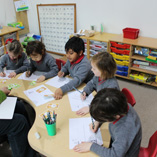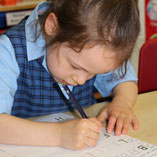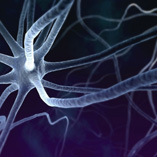Development of the Hemispheres Think Write Programme
Handwriting is a complex skill for children to learn. Clinically, a large proportion of the children who seek help from an Occupational Therapist find handwriting challenging, and it was to meet this clinical need that Shelley began developing the Hemispheres Think Write programme. It is true, school provide a high level of support for handwriting and used tried and tested ways of helping develop effective letter formation. It is also clear from the national statistics on handwriting that many children are still failing to achieve the appropriate standard of handwriting that is required for academic success.
Whilst there is a plethora of ideas, some suggesting that handwriting is outdated with the rise of technology, as an Occupational Therapist, with a keen interest in neurological development, I am concerned that eliminating handwriting altogether would have a detrimental effect on other aspects of neurological integration. Sometimes, we need to change the way we are teaching something to make the learning easier. The Hemispheres Think Write was develop as a ’tool’ to emphasise the cognitive or thinking skills that underpin handwriting, building a ‘thinking’ structure which children can use to build more effective methods of storing and recalling key facts and information associated with letter formation, spatial placement and size.
The Hemispheres Think Write use an explicit approach to teaching, it provides the children with all the information they need to understanding size, height, spatial placement and formation from the beginning. As this is taught using play, games and movements children are able to store the learning without having even picked up a pencil for writing!
Since the conception of the programme in 2009, its conversion for school use in 2012 and its launch in 2015, following different pilot studies, Hemispheres is now becoming recognised as a great programme for teaching handwriting in schools. The programme has grown on a national level with over 200 schools adopting the programme since 2015, and a growing interest in the programme on an international level.
As the heart of our development, is the motivation to provide resources that make learning to write easier for all children. Driving this forward is the most recent transition into interactive technology that not only supports the curriculum but offers children interactive learning games and activities to practise their cognitive understanding, ability to recall whilst also using the technology to learn to form their letters.
For information on the results of the studies please click
Help for children learning to write - A structured handwriting skills development programme
for PARENTS
for THERAPISTS
Sign Up
Terms & Conditions
Privacy Policy
About Cookies
Site Map
The Granary,
Rectory Farm,
Broadway Road,
Lightwater,
Surrey GU18 5SH
Tel: 01276 472 858
enquiries@thinkwrite-learning.co.uk
















 offers all schools a lively engaging way of teaching handwriting
offers all schools a lively engaging way of teaching handwriting